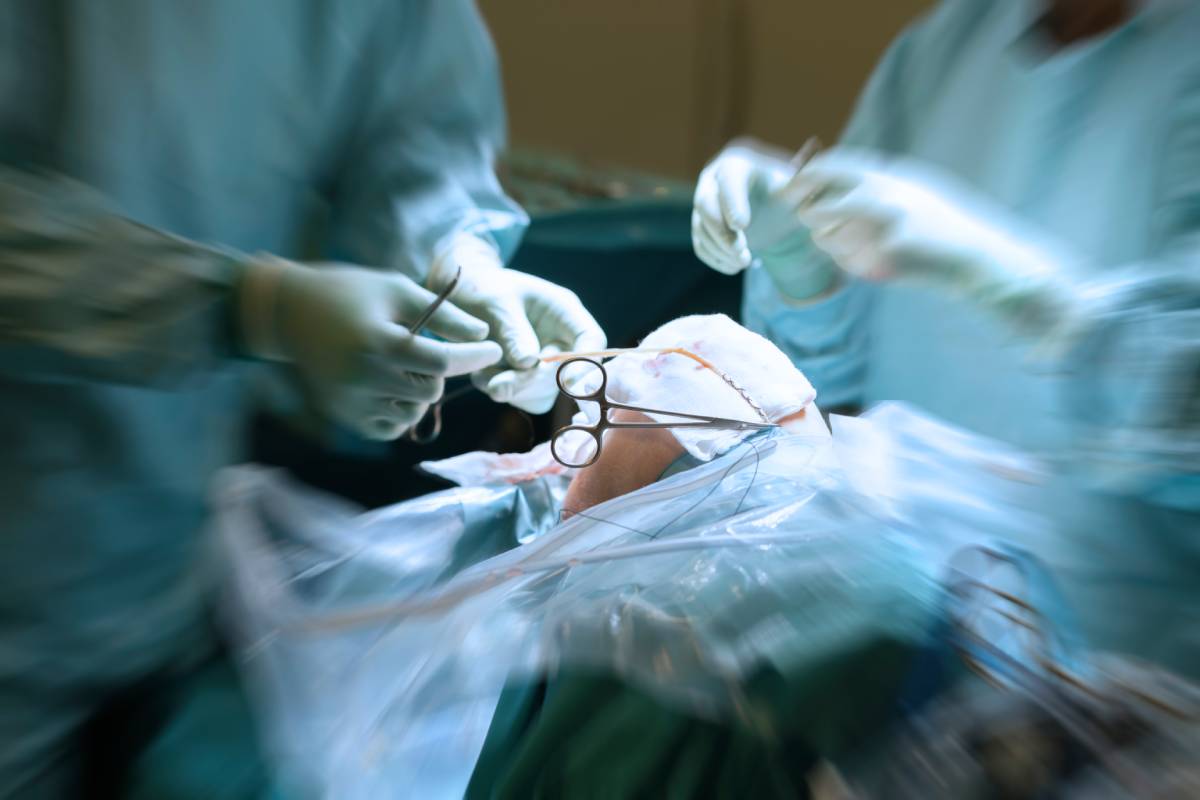Surgery in outpatient surgery centers rather than hospitals is becoming more and more common, as techniques, technology, and safety improve. While the most common types of procedures in surgery centers may still be relatively simpler and shorter, it is even possible to do knee replacements outside of the hospital. Ongoing research is necessary to compare patient outcomes for knee replacement performed in surgery centers vs. hospitals.
Carey et al. compares patient outcomes following knee replacement in either hospitals or ambulatory surgery centers. This research group consisted of patients aged 55–64 years who underwent total knee arthroplasty (TKA) during the years 2014-2016. Firstly, patients who had the TKA procedure done at ambulatory surgery centers had lower complication rates: 5.48%, compared to the rate from in-patient hospital visits of 6.29%. Secondly, in-patient hospital visits had a higher readmission rate of 5.56% and 9.87% for the 30-day and 90-day benchmarks respectively. Comparatively, patients at the surgery center had a readmission rate of 1.98% for 30 days and 3.15% for 90 days. Revision surgery rates for in-patient hospital visits were slightly higher at 0.51% than ambulatory surgery centers, 0.47%.
Carey et al. conducted a similar comparison for knee replacement outcomes in outpatient hospitals vs. surgery centers. As before, patients who had the TKA procedure done at ambulatory surgery centers had lower complication rates: 4.67%, compared to outpatient hospital visits’ 5.33%. Secondly, outpatient hospital visits had a higher readmission rate of 4% and 6.22% for the 30-day and 90-day benchmark respectively. Comparatively, patients at the surgery center had a readmission rate of 1.56% for 30 days and 2.89% for 90 days.
In-patient hospital TKA procedures cost about $5000 more than ambulatory surgery centers; outpatient TKA procedures cost about $1,700 less than surgery centers. There were no significant differences in postoperative pain and function between the patient groups; however, patients who visited the ambulatory surgery centers expressed more concern about safety and quality of care. Carey et al. argue that the ambulatory surgery centers may be a superior option for knee replacement surgery in patients who are considered low risk and have no significant comorbidities compared to hospitals [1].
To facilitate the migration of TKA procedures from hospitals to ambulatory surgery centers, Van Horne et al. propose using liposomal bupivacaine to improve pain management. Patients’ opioid usage during and after the procedure extends their hospital stay due to the side effects of the opioid use, thereby increasing financial and personal cost to the patient. When Van Horne et al. used liposomal bupivacaine, a long-acting local anesthetic, in their hospital TKA procedures, this increased same day hospital discharge rates from 32% to 72%, from 2014 – 2015 and then by 2019, there was a 92% rate of overall same-day discharge rate. The average time spent in the hospital decreased too, from 14 to 7 hours in the hospital and 12 to 7 hours in the surgery center. Based on these changes, Van Horne et al. concluded that a same-day hospital TKA procedure is better done at the ambulatory surgery center. Since there were not any increases in surgical or procedural complications from one location to the next, surgery centers are highly recommended for patients to drastically reduce the cost and increase the accessibility of TKA procedures [2].
Scully et al. discuss technical improvements to ambulatory surgery centers so that they can compete with hospitals in the realm of knee replacement and similar procedures. By focusing on patient selection, education, and satisfaction, the reputation of surgery centers can be improved. Selecting the right patients by applying a rigorous pre-operative evaluation minimizes the chance of complications. Consistently positive outcomes are needed to enhance patient perception and confidence in surgery centers [3].
References
- Carey K, Morgan JR, Lin MY, Kain MS, Creevy WR. Patient Outcomes Following Total Joint Replacement Surgery: A Comparison of Hospitals and Ambulatory Surgery Centers. J Arthroplasty. 2020 Jan;35(1):7-11. doi: 10.1016/j.arth.2019.08.041. Epub 2019 Aug 23. PMID: 31526700; PMCID: PMC6910922.
- Van Horne J, Van Horne A, Liao N, Romo-LeTourneau V. Migration of Hospital Total Hip and Knee Arthroplasty Procedures to an Ambulatory Surgery Center Setting and Postsurgical Opioid Use: A Private Practice Experience. Am Health Drug Benefits. 2022 Mar;15(1):21-29. PMID: 35586615; PMCID: PMC9038002.
- Scully, Ryan D. MD; Kappa, Jason E. MD; Melvin, J. Stuart MD. “Outpatient”—Same-calendar-day Discharge Hip and Knee Arthroplasty. Journal of the American Academy of Orthopaedic Surgeons 28(20):p e900-e909, October 15, 2020. | DOI: 10.5435/JAAOS-D-19-00778
